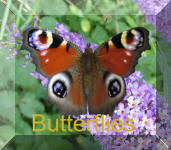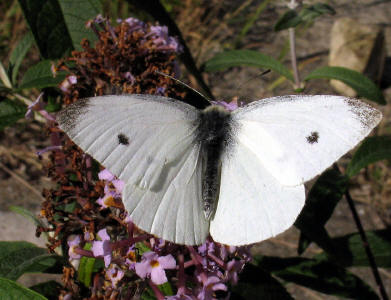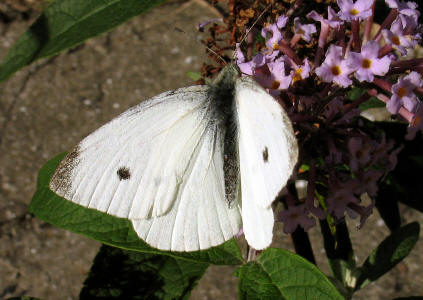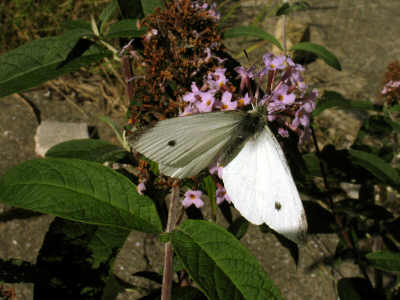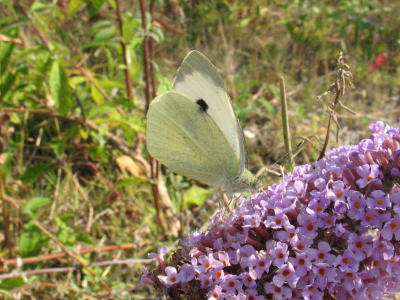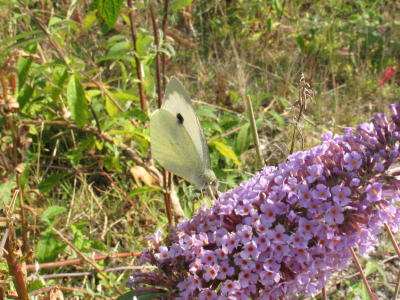The Large White is our largest white butterfly
and is a strong flyer. It is not always welcomed in gardens and fields
because of the damage its larvae inflict on brassica crops. The larvae
are brightly coloured and conspicuous, a signal to warn predators of the
irritant and poisonous mustard oils they have concentrated from the foodplants.
Many adults seen in Britain and Ireland have flown
from mainland Europe. Numbers of both residents and migrants of this common
and widespread species vary considerably from year to year.
Behaviour and life history
The Large White is a strong, if erratic flier,
which appears to roam wherever it pleases since it does not form colonies.
Mid summer numbers are often boosted by large migrations from the continent.
Large Whites over-winter as a chrysalis with the first adult brood appearing
towards the end of April or beginning of May. Eggs are laid in May and
June, with the caterpillars feeding from late May until the middle of July.
A few weeks are then spent as a chrysalis before the second adult brood
emerges towards the end of July and into August. Eggs from the second brood
are laid from early August onwards, and their caterpillars hibernate as
chrysalises above ground in sheltered locations from late September onwards.
There can be a third brood in good years. Larval food plants include cabbage
(hence they, together with Small Whites, Pieris rapae, areoften collectively
known as Cabbage Whites) but they will feed on most plants in the cabbage family (Brassicaceae)
and are also partial to garden Nasturtiums
(Trapaeolum spp.).
Where to look for it
Anywhere, but particularly along hedgerows, in
allotments and gardens.
Distribution and status
Common

